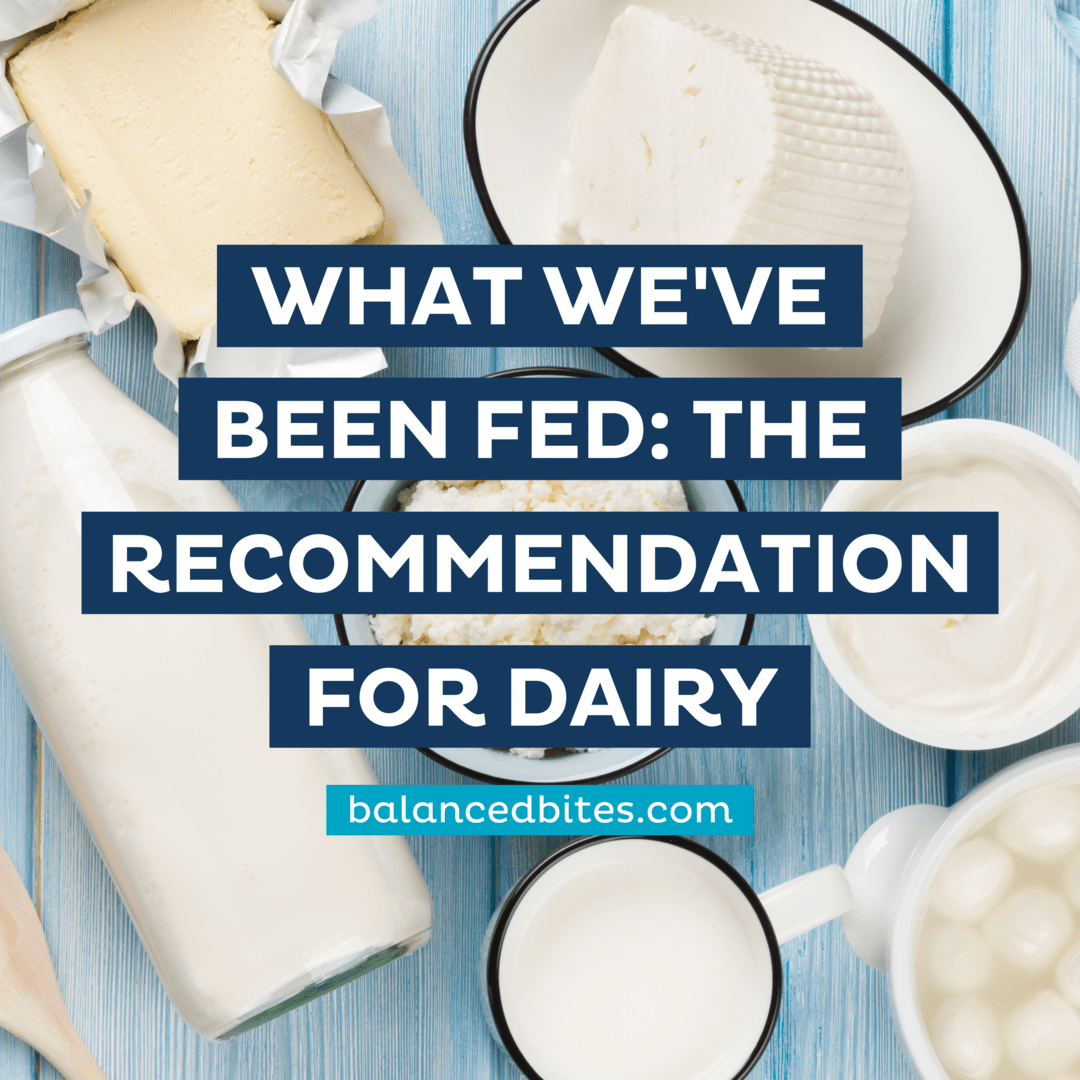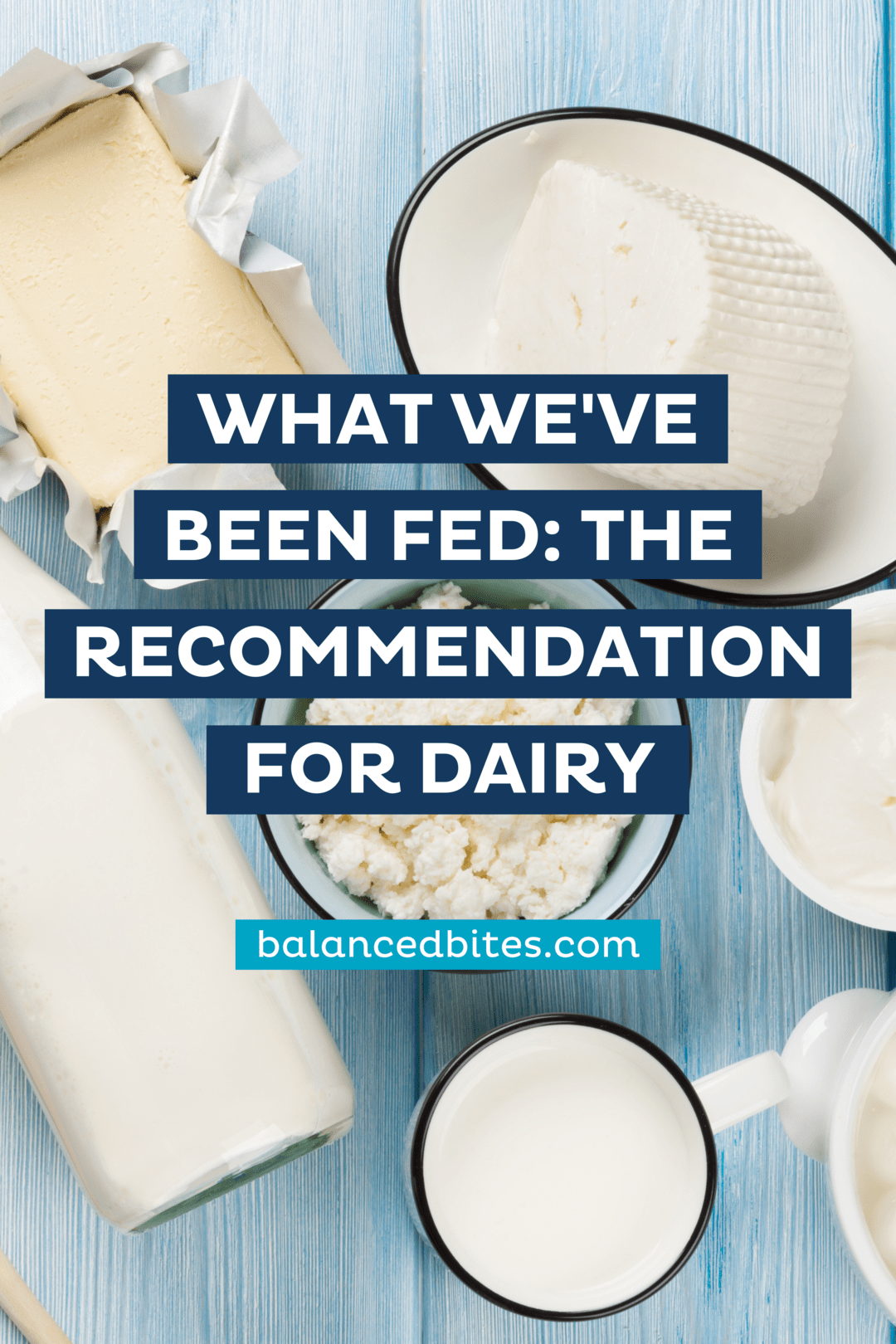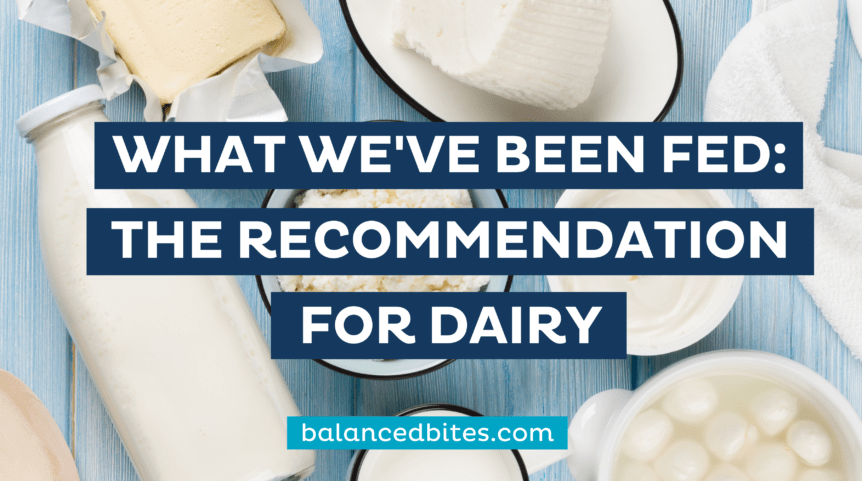In this series, I'm sharing some excerpts from my book, “Practical Paleo” with you.
You may or may not choose to follow a paleo style of eating, it isn't required to be healthy.
But, many of you have told me you've benefitted from eating paleo for a short or long period of time, so these posts will explain more of the premise behind paleo eating for those curious.
Further, while I don't currently educate publicly about the paleo diet, you can always read a lot more and get over 100 easy paleo recipes in “Practical Paleo.”
Here's what the USDA has to say about dairy in our diet…
“A healthy eating pattern includes fat-free or low-fat dairy, including milk, yogurt, cheese, and/or fortified soy beverages.”
Following this recommendation could mean increasing your consumption of pasteurized, processed milk and dairy products from cows raised in concentrated animal feeding operations (CAFOs) or even more highly processed milk substitutes made from legumes (soy), none of which are what’s best for your health.
You will be hard-pressed to find a producer of high-quality, raw, grass-fed milk selling low-fat or fat-free cow’s milk (or yogurt, for that ma!er).
Why? Because they know that vitamins A, D, and K2 are fat-soluble—meaning that we need to consume them alongside fat for proper absorption.
What’s more, that straight-from-the-farm beverage is richer in these vitamins because cows grazing on pasture produce more nutrient-rich milk.
We need these vitamins for proper growth, strong immune systems, and the integrity of our bones (o”en referred to as “bone density”).
In fact, many people who ingest extra calcium from low-fat dairy products or supplements in the hope of building bone strength aren’t getting enough of these vitamins for the calcium to be properly assimilated.
Skimming and processing raw milk is a waste of beautiful nutrients.

What About Calcium on a Paleo Diet?
Fact #1: Calcium is abundantly present in more than just dairy foods.
Did you know that sardines (with the bones in, of course), sesame seeds, and dark green leafy vegetables are good sources of calcium?
What’s more, these whole, unprocessed foods are also fantastic sources of magnesium, a mineral that your body needs to help to assimilate calcium. Boom. Right there you have a great way of getting calcium and magnesium into your diet.
Fact #2: To absorb and utilize calcium appropriately, we need other nutrients, too.
Simply consuming calcium as a mineral isn’t enough to make stronger bones!
We also need fat-soluble vitamin D, which helps your body absorb the calcium you eat, and vitamin K2, which helps direct the show—it actually orchestrates the placement of calcium into our bones, where we want it, and not into our soft tissues.
In other words: it’s not just how much calcium you eat but how much you absorb, and where it goes when you absorb it.
If you want to build strong bone matrix, be sure you’re getting enough sun exposure, which is one of the best ways to get vitamin D (just don’t overdo it and get sunburned!), and eating foods rich in vitamin D—like liver, egg yolks, and grass-fed dairy, if you tolerate it—and vitamin K2, primarily found in fermented cod liver oil and fermented grass-fed dairy (think kefir or yogurt that’s fermented for twenty-four hours), grass-fed butter, chicken breast, ground beef, and fermented meats like salami.
Vitamin K2 will likely be undetectable in pasteurized, grain-fed milk.
Fact #3: Grain consumption can inhibit calcium absorption.
Grain products all contain antinutrients called phytates. Phytates bind to minerals we eat and keep them from being absorbed by our bodies.
So when we sit down to a bowl of cereal with milk, we’re actually eating a food that blocks the absorption of calcium right along with calcium-rich milk!
Fact #4: Not all dairy is created equal.
The dairy nature produces isn’t the problem.
The primary problem is that we think we have to process dairy to be “healthier” for us to consume, and we muck it all up!
If you can find a great local source of raw, grass-fed milk or other dairy products and you feel good eating dairy, I say go right on ahead.
Many of the studies that have found problems with dairy are examining either isolated dairy proteins like casein or whey, not the whole foods that contain whey and casein together, or processed and reduced- fat forms of dairy foods.
Note that while dairy products are not considered part of a strict Paleo diet, I recommend testing them in your reintroduction phase (you can refer to Practical Paleo for more info on this) to discover your own personal tolerance.
If you find that your body does well with dairy products, then consuming high-quality forms will not only provide great nutrition but also broaden your list of available foods for maintaining a real foods–based lifestyle after your initial strict Paleo phase.
Yet the USDA recommends that we eat fat-free or low-fat milk and milk products. Why? Do they mean that milk straight from the cow isn’t recommended, and milk that has been processed and had its most valued nutrients removed is actually healthier? Perhaps in addition to forge!ing how real, nutritious milk should be produced and consumed, they have also misinterpreted epidemiological data yet again. Is the government smarter than Mother Nature?
Know this: Real milk is raw (unpasteurized), comes from grass-fed/pasture-raised cows, and is not low-fat or fat-free.
If you are lactose-intolerant, you may be able to drink raw milk without a problem, as the lactase enzyme necessary for the digestion of lactose is still present in raw milk. Raw milk is a good dietary source of protein, fat, carbohydrates, calcium, and fat-soluble vitamins A, D, and K2, all of which are important for bone density.
If you find that you tolerate dairy well, without sinus congestion, sneezing, digestive upset, or signs of chronic inflammation (see page 91), find a trustworthy source and enjoy your milk in its whole, full- fat, natural state.
If you don’t tolerate dairy products well, even after trying raw milk, you may still be well-served by incorporating grass-fed bu!er, which contains fewer of the commonly irritating dairy proteins, into your diet.
You could also use ghee, which contains virtually no dairy proteins, or a butter oil supplement, which has the lowest potential for containing any trace of dairy proteins.
Typically, an allergic or inflammatory response to dairy does not occur with pure butter oil because it lacks the milk protein constituents, such as casein and whey, and sugars, like lactose, that are the underlying problem. (See Practical Paleo for more information about choosing dairy products responsibly.)

REAL MILK INFO
Visit realmilk.com to find out where you can buy raw milk.
If you missed the intro to this series, you can find it here. The rest of the series can be found here:
The USDA Recommendation for Grains
The USDA Recommendation for Legumes
Stay tuned for The Recommendation for Saturated Fats coming next week as well as my follow-up posts with my own recommendations.

